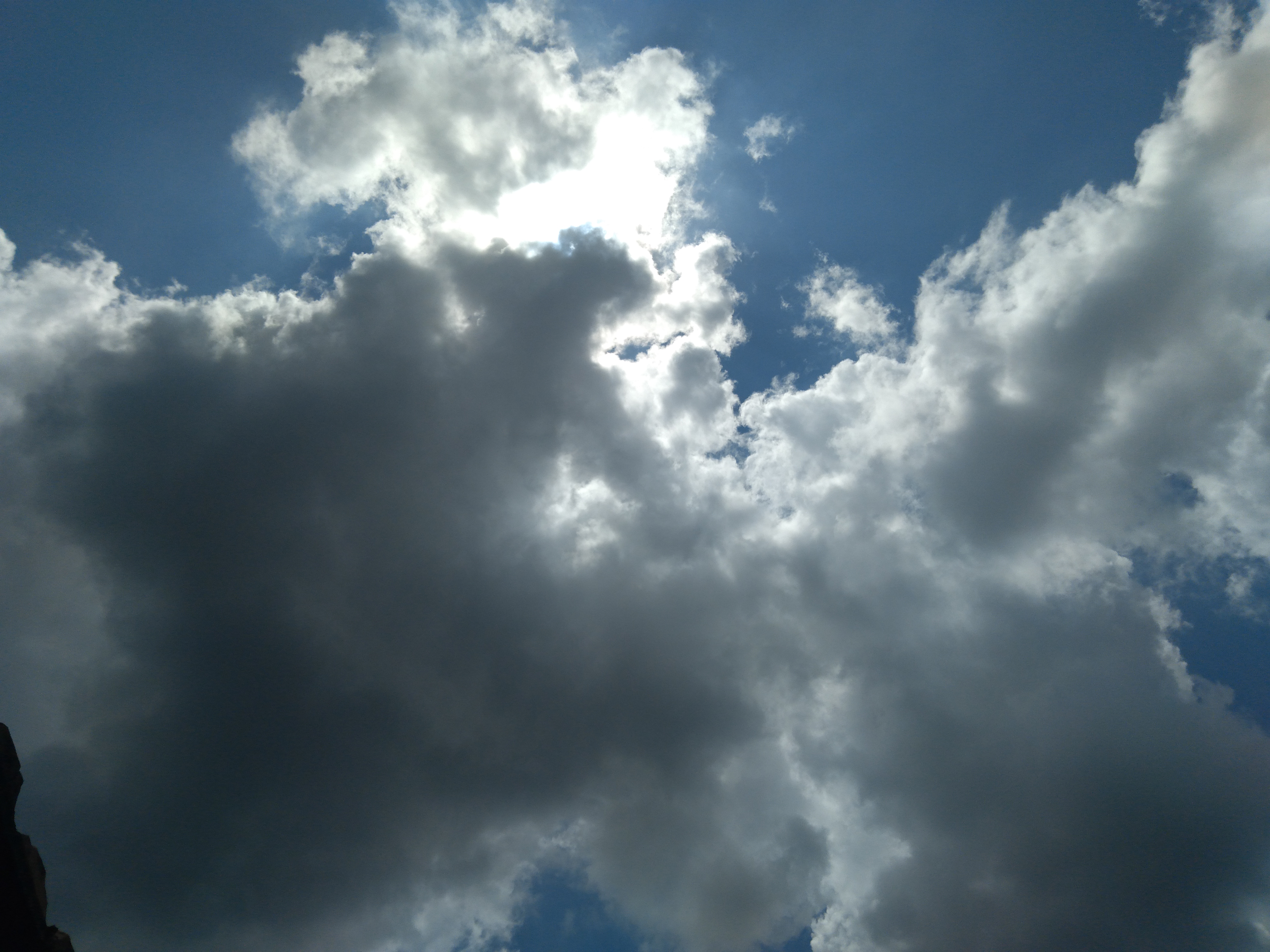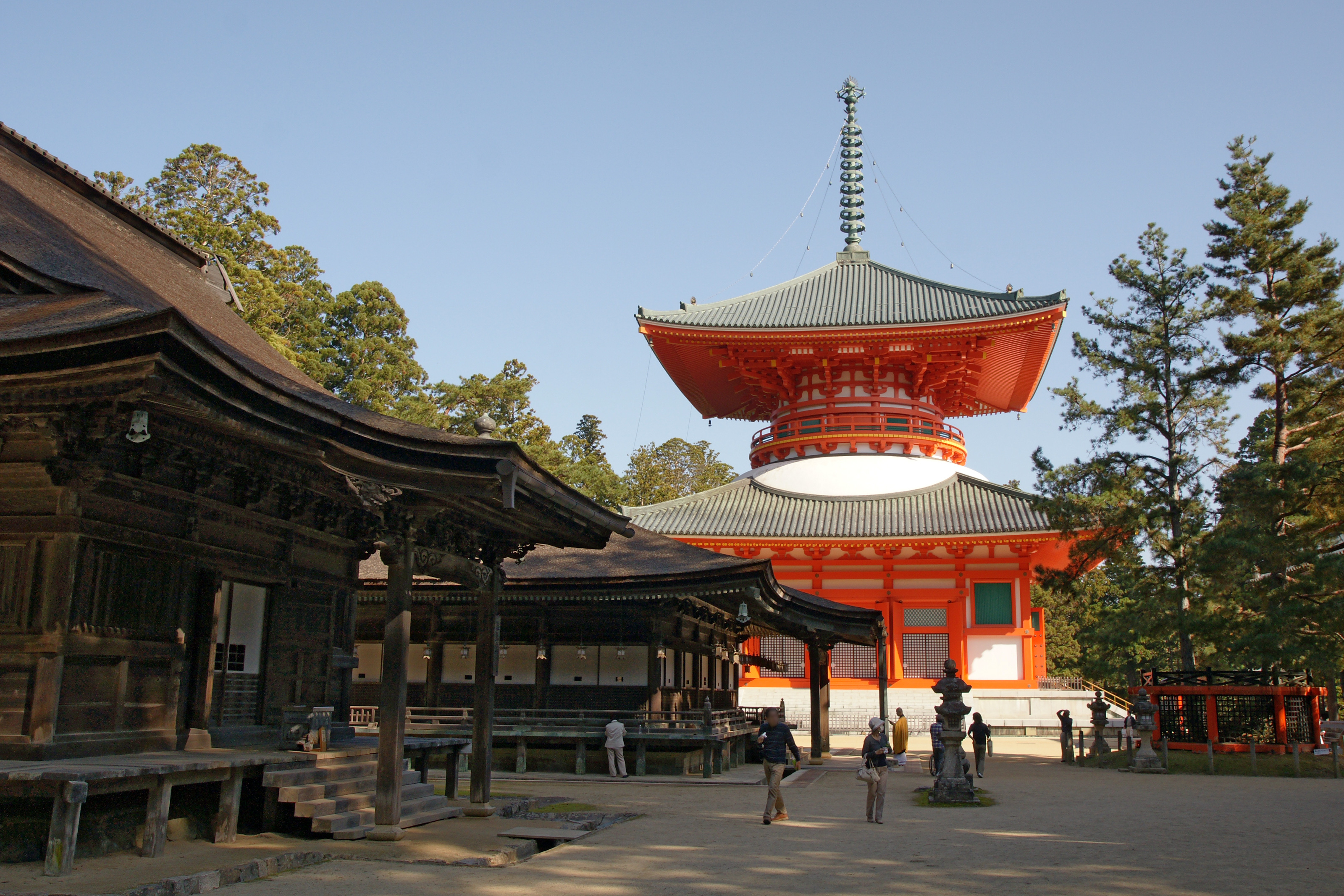|
A In Buddhism
Letter A in Siddham script The phoneme A ( Nagari: अ, Siddham: 𑖀) is an important symbol and seed mantra in Mahayana Buddhism as well as in Vajrayana Buddhism.Robert E. Buswell and Donald S. Lopez (2014). ''The Princeton Dictionary of Buddhism'', pp. 1, 24. Published by Princeton University Press In Mahayana A is the first vowel of the Sanskrit alphabet. Mahayana Buddhism invested the phoneme with mystical significance, associated with the doctrine of emptiness. In Sanskrit, when a is used as a prefix, it negates the meaning of a word. Thus, for example, ''svabhāva'', “with essence,” can be changed to ''asvabhāva'', “without essence.” The letter also came to signify the Mahayana teaching of Prajñāpāramitā (the Perfection of Wisdom). One of the Prajñāpāramitā sutras is the short ''The Perfection of Wisdom Mother in One Syllable'' (''ekākṣarīmātāprajñāpāramitā''). The sutra opens and closes lik ... [...More Info...] [...Related Items...] OR: [Wikipedia] [Google] [Baidu] |
SIDDHAM LETTER A
Siddham may refer to: *Siddhaṃ script, an alphabet and numeral script that originated and was used in India; now used in East Asia only **Siddham (Unicode block) * ''Siddham'' (film), a 2009 Indian Telugu-language action film See also *Siddha (other) Siddha is a Sanskrit term meaning "one who is accomplished"; has mastered, or has mastery over pure consciousness/knowledge ( chit). * Siddhar; Chittar, a variant English spelling Siddha may refer to: * Siddha, in Hinduism and Jainism, a person w ... * Sidh (other) {{disambiguation ... [...More Info...] [...Related Items...] OR: [Wikipedia] [Google] [Baidu] |
Chan Buddhism
Chan (; of ), from Sanskrit '' dhyāna'' (meaning " meditation" or "meditative state"), is a Chinese school of Mahāyāna Buddhism. It developed in China from the 6th century CE onwards, becoming especially popular during the Tang and Song dynasties. Chan is the originating tradition of Zen Buddhism (the Japanese pronunciation of the same character, which is the most commonly used English name for the school). Chan Buddhism spread from China south to Vietnam as Thiền and north to Korea as Seon, and, in the 13th century, east to Japan as Japanese Zen. History The historical records required for a complete, accurate account of early Chan history no longer exist. Periodisation The history of Chan in China can be divided into several periods. Zen, as we know it today, is the result of a long history, with many changes and contingent factors. Each period had different types of Zen, some of which remained influential, while others vanished. Andy Ferguson distinguishes thr ... [...More Info...] [...Related Items...] OR: [Wikipedia] [Google] [Baidu] |
Buddhist Symbols
Buddhism, Buddhist symbolism is the use of symbols (Sanskrit: ''pratīka'') to represent certain aspects of the Gautama Buddha, Buddha's Dharma (teaching). Early Buddhist symbols which remain important today include the Dharmachakra, Dharma wheel, the Nelumbo nucifera, Indian lotus, the Triratna, three jewels and the Bodhi Tree.Coomaraswamy (1998), pp. 1–5. Buddhism symbolism is intended to represent the key values of the Buddhist faith. The popularity of certain symbols has grown and changed over time as a result of progression in the followers ideologies. Research has shown that the aesthetic perception of the Buddhist gesture symbol positively influenced perceived happiness and life satisfaction. Anthropomorphic symbolism depicting the Buddha (as well as other figures) became very popular around the first century CE with the arts of Mathura and the Greco-Buddhist art of Gandhara. New symbols continued to develop into the medieval period, with Vajrayana, Vajrayana Buddhism ado ... [...More Info...] [...Related Items...] OR: [Wikipedia] [Google] [Baidu] |
A-un
''Om'' (or ''Aum''; ; , ISO 15919: ''Ōṁ'') is a polysemous symbol representing a sacred sound, seed syllable, mantra, and invocation in Hinduism. Its written form is the most important symbol in the Hindu religion. It is the essence of the supreme Absolute, consciousness,James Lochtefeld (2002), "Om", ''The Illustrated Encyclopedia of Hinduism'', Vol. 2: N-Z, Rosen Publishing. , page 482Om . ''Merriam-Webster'' (2013), Pronounced: \ˈōm\ ''Ātman (Hinduism), Ātman,'' ''Brahman,'' or the cosmic world.David Leeming (2005), ''The Oxford Companion to World Mythology'', Oxford University Press, , page 54Hajime Nakamura, ''A History of Early Vedānta Philosophy'', Part 2, Motilal Banarsidass, , page 318Annette Wilke and Oliver Moebus ... [...More Info...] [...Related Items...] OR: [Wikipedia] [Google] [Baidu] |
Ground (Dzogchen)
In Dzogchen, the ground or base () is the primordial state of any sentient being. It is an essential component of the Dzogchen tradition for both the Bon tradition and the Nyingma school of Tibetan Buddhism. Knowledge of this ''ground'' is called ''rigpa''. Explication A key concept in Dzogchen is the 'basis', 'ground' or 'primordial state' (Tibetan: གཞི་ ''gzhi''), also called the general ground (སྤྱི་གཞི་ ''spyi gzhi'') or the original ground (གདོད་མའི་གཞི་ ''gdod ma'i gzhi''). The basis is the original state "before realization produced buddhas and nonrealization produced sentient beings". It is atemporal and unchanging and yet it is "noetically potent", giving rise to mind (སེམས་ ''sems,''), consciousness (ཤེས་པ་ ''shes pa''), delusion (མ་རིག་པ་ ''marigpa'') and knowledge (རིག་པ་་''rigpa''). Furthermore, Hatchell notes that the Dzogchen tradition portrays ultimate reality as ... [...More Info...] [...Related Items...] OR: [Wikipedia] [Google] [Baidu] |
Nyingma
Nyingma (, ), also referred to as ''Ngangyur'' (, ), is the oldest of the four major schools of Tibetan Buddhism. The Nyingma school was founded by PadmasambhavaClaude Arpi, ''A Glimpse of the History of Tibet'', Dharamsala: Tibet Museum, 2013. as the first translations of Buddhist scriptures from Pali and Sanskrit into Tibetic languages, Tibetan occurred in the eighth century. The establishment of Tibetan Buddhism and the Nyingma tradition is collectively ascribed to Khenpo Shantarakshita, Guru Padmasambhava, and King Trisong Detsen, known as ''Khen Lop Chos Sum'' (The Three: Khenpo, Lopon, Chosgyal). The Nyingma tradition traces its Dzogchen lineage from the Adi-Buddha, first Buddha Samantabhadra to Garab Dorje, and its other lineages from Indian mahasiddhas such as Sri Singha and Jnanasutra. Yeshe Tsogyal recorded the teachings. Other great masters from the founding period include Vimalamitra, Vairotsana, and Buddhaguhya. The Nyingma tradition was physically founded at Samye ... [...More Info...] [...Related Items...] OR: [Wikipedia] [Google] [Baidu] |
Dzogchen
Dzogchen ( 'Great Completion' or 'Great Perfection'), also known as ''atiyoga'' ( utmost yoga), is a tradition of teachings in Indo-Tibetan Buddhism and Bön aimed at discovering and continuing in the ultimate ground of existence. The goal of Dzogchen is the direct experience of this basis, called (Sanskrit: ). There are spiritual practices taught in various Dzogchen systems for discovering . Dzogchen emerged during the first dissemination of Buddhism in Tibet, around the 7th to 9th centuries CE. While it is considered a Tibetan development by some scholars, it draws upon key ideas from Indian sources. The earliest Dzogchen texts appeared in the 9th century, attributed to Indian masters. These texts, known as the Eighteen Great Scriptures, form the "Mind Series" and are attributed to figures like Śrī Siṅgha and Vimalamitra. Early Dzogchen was marked by a departure from normative Vajrayāna practices, focusing instead on simple calming contemplations leading to a di ... [...More Info...] [...Related Items...] OR: [Wikipedia] [Google] [Baidu] |
Kūkai
, born posthumously called , was a Japanese Buddhist monk, calligrapher, and poet who founded the Vajrayana, esoteric Shingon Buddhism, Shingon school of Buddhism. He travelled to China, where he studied Tangmi (Chinese Vajrayana Buddhism) under the monk Huiguo. Upon returning to Japan, he founded Shingon—the Japanese branch of Vajrayana Buddhism. With the blessing of several Emperors of Japan, Emperors, Kūkai was able to preach Shingon teachings and found Shingon temples. Like other influential monks, Kūkai oversaw public works and constructions. Mount Kōya was chosen by him as a holy site, and he spent his later years there until his death in 835 C.E. Because of his importance in Japanese Buddhism, Kūkai is associated with many stories and legends. One such legend attribute the invention of the ''kana'' syllabary to Kūkai, with which the Japanese language is written to this day (in combination with ''kanji''), as well as the ''Iroha'' poem, which helped to standardise ... [...More Info...] [...Related Items...] OR: [Wikipedia] [Google] [Baidu] |
Buddha-nature
In Buddhist philosophy and soteriology, Buddha-nature ( Chinese: , Japanese: , , Sanskrit: ) is the innate potential for all sentient beings to become a Buddha or the fact that all sentient beings already have a pure Buddha-essence within themselves.Heng-Ching ShihThe Significance Of 'Tathagatagarbha' – A Positive Expression Of 'Sunyata'/ref> "Buddha-nature" is the common English translation for several related Mahāyāna Buddhism, Buddhist terms, most notably ''tathāgatagarbha'' and ''buddhadhātu'', but also ''sugatagarbha,'' and ''buddhagarbha''. ''Tathāgatagarbha'' can mean "the womb" or "embryo" (''garbha'') of the "thus-gone one" (''Tathagata, tathāgata''), and can also mean "containing a ''tathāgata''"''. Buddhadhātu'' can mean "buddha-element", "buddha-realm", or "buddha-substrate". Buddha-nature has a wide range of (sometimes conflicting) meanings in Indian Buddhism and later in East Asian Buddhism, East Asian and Tibetan Buddhism, Tibetan Buddhist literatur ... [...More Info...] [...Related Items...] OR: [Wikipedia] [Google] [Baidu] |
Dharmakāya
The ''dharmakāya'' (, "truth body" or "reality body", zh, t=法身, p=fǎshēn, ) is one of the three bodies (''trikāya'') of a Buddha in Mahāyāna Buddhism. The ''dharmakāya'' constitutes the unmanifested, "inconceivable" (''acintya'') aspect of a Buddha out of which Buddhas arise and to which they return after their dissolution. When a Buddha manifests out of the ''dharmakāya'' in a physical body of flesh and blood'','' which is perceptible to ordinary sentient beings, this is called a '' nirmāṇakāya'', "transformation body". The Dhammakāya tradition of Thailand and the '' Tathāgatagarbha sūtras'' of the ancient Indian tradition view the ''dharmakāya'' as the '' ātman'' (true self) of the Buddha present within all beings. Origins and development Pāli Canon In the Pāli Canon, Gautama Buddha tells Vasettha that the Tathāgata (the Buddha) is ''dhammakaya'', the "truth-body" or the "embodiment of truth", as well as ''dharmabhuta'', "truth-become", that ... [...More Info...] [...Related Items...] OR: [Wikipedia] [Google] [Baidu] |
Vairocana
Vairocana (from Sanskrit: Vi+rocana, "from the sun" or "belonging to the sun", "Solar", or "Shining"), also known as Mahāvairocana (Great Vairocana), is a major Buddha from Mahayana and Vajrayana Buddhism. Vairocana is often interpreted, in texts like the '' Avatamsaka Sutra'', as the Dharmakāya of the historical Gautama Buddha. In East Asian Buddhism ( Chinese, Korean, Japanese and Vietnamese Buddhism), Vairocana is also seen as the dharmakāya (the supreme buddha-body, the body of ultimate reality), and the embodiment of the Buddhist concept of wisdom and purity. Mahāvairocana is often translated into East Asian languages as "Great Sun Buddha" ( Chinese: 大日如來, pinyin: ''Dàrì Rúlái'', Japanese: ''Dainichi Nyorai''). In the conception of the Five Jinas of Mahayana and Vajrayana Buddhism, Vairocana is at the centre and is often considered a Primordial Buddha. In East Asian esoteric Buddhism, Mahāvairocana is considered to be a Cosmic Buddha whose body is th ... [...More Info...] [...Related Items...] OR: [Wikipedia] [Google] [Baidu] |
Shingon Buddhism
is one of the major schools of Buddhism in Japan and one of the few surviving Vajrayana lineages in East Asian Buddhism. It is a form of Japanese Esoteric Buddhism and is sometimes called "Tōmitsu" (東密 lit. "Esoteric uddhismof Tō-ji"). The word ''shingon'' is the Japanese reading of the Chinese word ('), which is the translation of the Sanskrit word mantra. The Zhēnyán lineage was founded in China (c. 7th–8th centuries) by Indian vajrācāryas (esoteric masters) like Śubhakarasiṃha, Vajrabodhi and Amoghavajra. These esoteric teachings would later flourish in Japan under the auspices of a Buddhist monk named Kūkai (, 774–835), who traveled to Tang China and received these esoteric transmissions from a Chinese master named Huiguo (746–805). Kūkai established his tradition at Mount Kōya (in Wakayama Prefecture), which remains the central pilgrimage center of Shingon Buddhism. The practice of the Shingon school stresses that one is able to atta ... [...More Info...] [...Related Items...] OR: [Wikipedia] [Google] [Baidu] |







